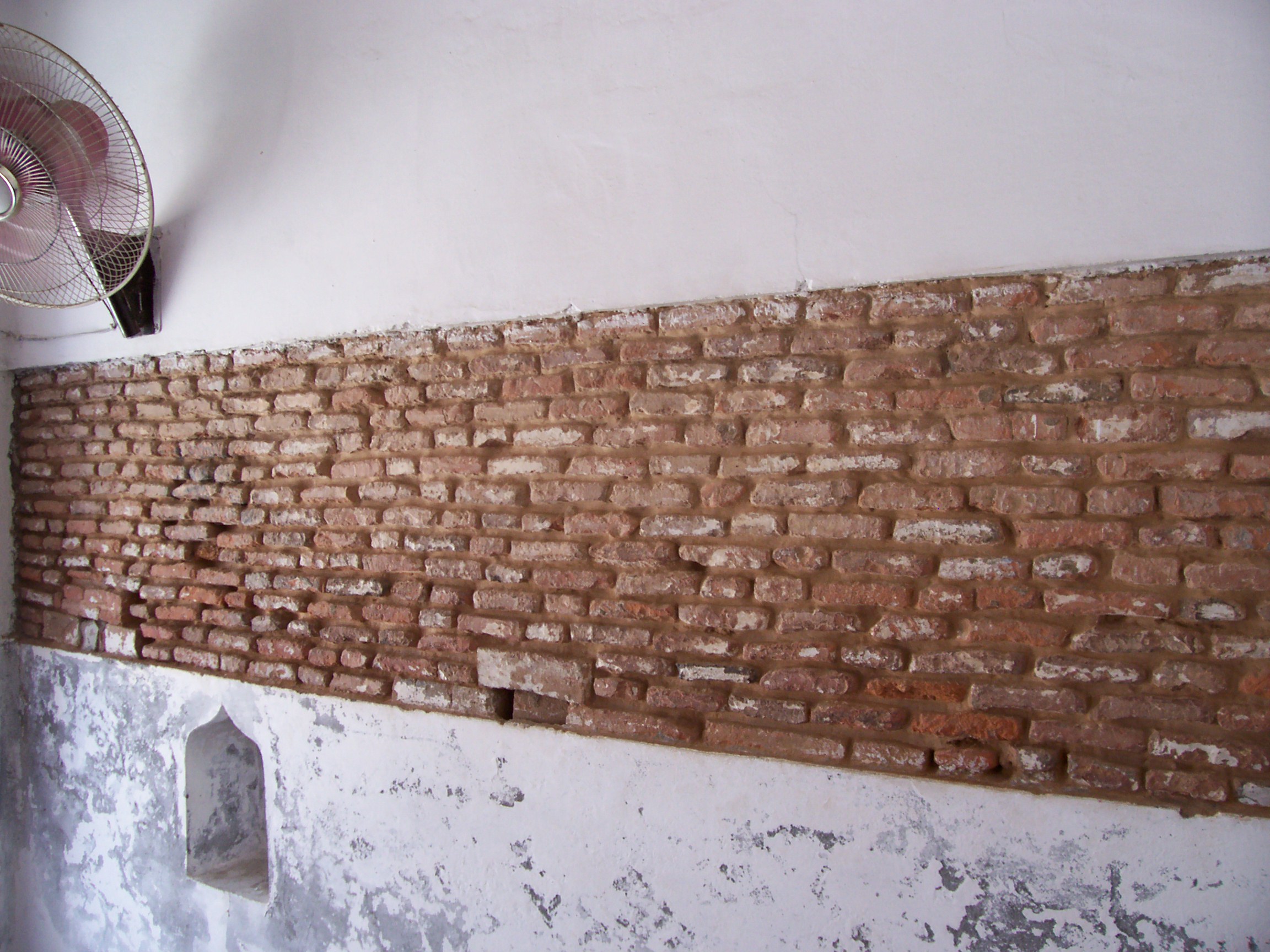Nanak shahi Bricks
Nanak Shahi brick was most commonly used for its intrinsic advantages. They were the decorated bricks used in Mughal era. The building blocks from the demolished historic buildings was the Nanakshahi brick a slim brick of 6x4 x(1.25) Traditional small bricks that were burnt with timber and cow dung are far superior in strength and more resilient than the conventional bricks. This brick was used judiciously as column cladding, as joints between the block and column, in the three centered arches and even in the windows apart from being used in the roof in different patterns.
Nanak Shahi bricks were kind of brick tiles of moderate dimensions used for reinforcing lime concretes in the structural walls and other components which were generally very thick. The brick-tile made mouldings, cornices, plasters, etc., easy to work into a variety of shapes. More often than not, the structures, especially the Sikh temples (gurudwaras) were a combination of the two systems, viz, trabeated or post-and-lintal, and acerated or based on arches. The surfaces were treated with lime or gypsum plaster which was moulded into cornices, pilasters, and other structural as well as non-structural embellishments.
Brick, lime mortar as well as lime or gypsum plaster, and lime concrete were the most favoured building materials, although stone: such as red stone and white marble, were also used in a number of shrines. The Nanak Shahi Bricks found use more as cladding or decorative material than for meeting structural needs for well over two hundred years.
Nanak Shahi (from the times of Nanak) brick was most commonly used for its intrinsic advantages. It was a kind of brick tile of moderate dimensions used for reinforcing lime concretes in the structural walls and other components, which were generally very thick.
The brick-tile made moldings, cornices, plasters, etc., is easy to work into a variety of shapes. More often than not, the structure was a combination of the two systems, viz, trabeated or post-and-lintal, and acerated or based on arches. The surfaces were treated with lime or gypsum plaster which was molded into cornices, pilasters, and other structural as well as non-structural embellishments.

